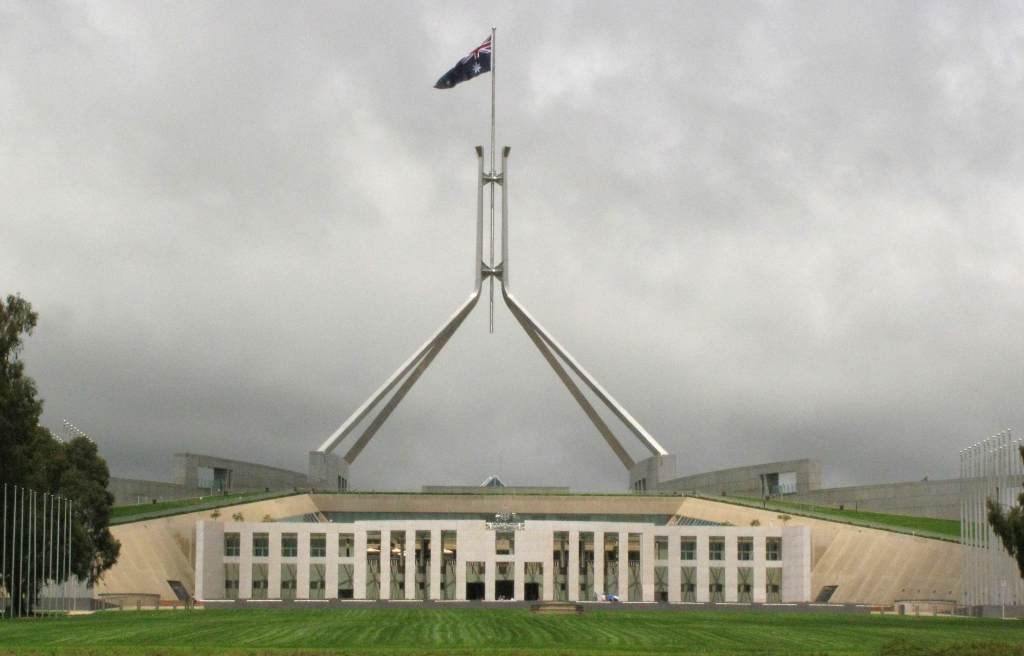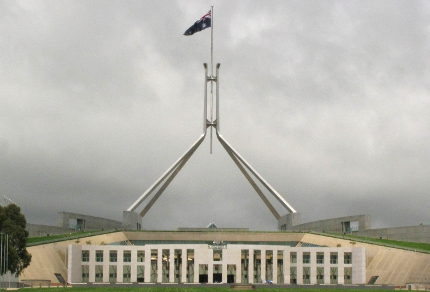After two weeks and many nights of lengthy rest since my surgery, I reverted to rising at 5 a.m. this morning to greet the day before being embraced by Townsville’s stalking, sultry heat. For my efforts, I was rewarded with a riveting dawn chorus of varied avian voices and the lovely sight of a rainbow arching above palm trees and a white-flowering frangipani. Then I returned to the house and tackled the editing of some early blog posts which required the insertion of references and tags, a task at which I laboured all day before escaping the house with Vilis to attend a book launch featuring former Australian prime minister John Howard and his newly published book Lazarus Rising: A Personal and Political Autobiography.
The launch was held in a roomy auditorium at James Cook University. Two blue-uphostered cane chairs and a small table covered with a red tablecloth had been set on the floor in front of the rising tiers of seats. A bottle of ice water and two glasses rested on the table, which along with the chairs, created the impression that we were invited to a cozy chat with Mr. Howard. Later, a copy of Lazarus Rising was added to the table, the hardcover volume no lightweight text. It looked to be 10 centimetres thick and cost $60.
Gradually, a casually-dressed audience assembled in the auditorium, but didn’t fill it. Most of the people in attendance were middle-aged or older, although a contingent of men and women in their twenties and thirties was present, along with a scattering of children accompanying parents . I spotted two camermen, two interviewers with fuzzy-coated mikes, and a couple of photographers, indicating that the launch, which had been advertised as a public lecture, would be a definite media event.
A few minutes past 6 p.m., John Howard strode briskly into the auditorium in the company of Richard Lane, a professor at JCU who, after he and the guest of honour were seated in those cozy-chat chairs, first asked John Howard a series of questions based on Lazarus Rising, and then opened the floor to questions from the audience. During the first session, I learned that Mr. Howard, who governed Australia from 1996 to 2007, is 71 years old and looks younger, that he brought in gun control legislation in 1996 following the Port Arthur Massacre in Tasmania, and that he was the first government head to call the Indonesian president after the Boxing Day tsunami in 2004. He appeared to take great pride in the fact that Australian and American military relief teams were the first on the tsunami scene, and even prouder that Australian troops had been instrumental in liberating East Timor (previously controlled by Indonesia) in 1999.
During the second Q & A session, Mr. Howard fielded a variety of questions from audience members, both young and older. He stated that he’s a strong proponent of nuclear energy, that Australia definitely needs to do more for its disabled citizens, and that he believes the largest threat to the western world is instability of international financial systems and growing nationalism and protectionism. He admitted that he’d made a serious blunder in a speech during Aboriginal reconciliation talks in 1997 and defended his stance on refusing to issue a formal apology to Aboriginals and Torres Strait Islanders because he believed such an apology should only be given by the perpetrators of the injustices suffered. In an aside, he did mention that Kevin Rudd’s government, which followed his, did issue that apology. Mr. Howard declined to make any judgments with respects to the new Julia Gillard government, saying it was too early in her term to make judgements. He also revealed that he was in Washington giving a press conference while the 9/11 bombings took place. When curtains were opened after the conference ended, he saw smoke rising from the Pentagon.
All in all, the launch was a most intriguing event. At times, the audience was a bit noisy and rambunctious, but an air of genuine respect, and maybe even fondness, pervaded the auditorium. There wasn’t a single violent outburst, and security was minimal. At the end of the audience Q & A session, a Kenyan woman spoke of how she had adopted Australia as her country and what a wonderful testament it was to the freedoms Australians possess, that such an event could be held without machine-gun-wielding security personel everywhere. Well done, Australia.

Australia’s Parliament House in Canberra (© Magi Nams)


